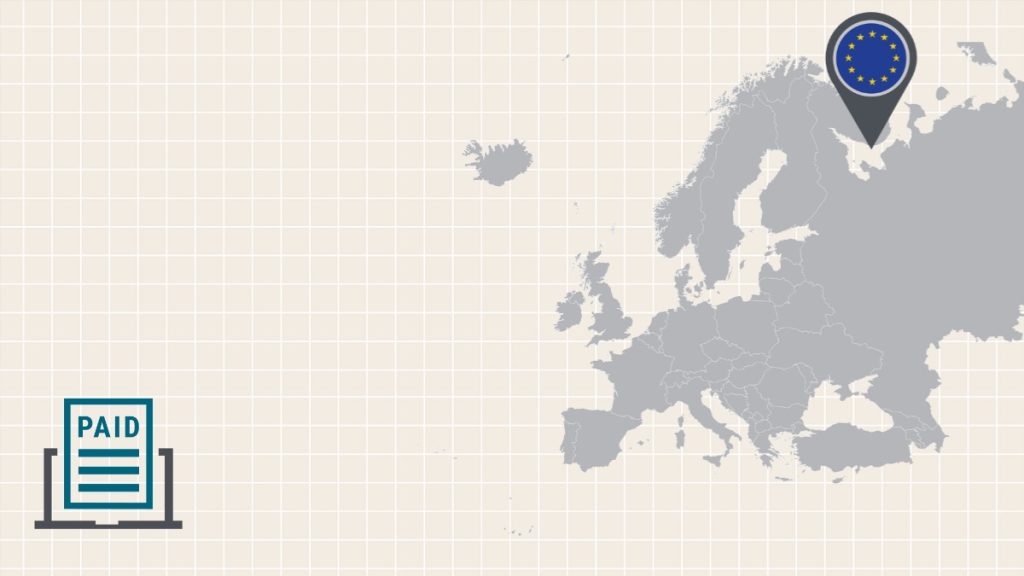You probably first heard of the European e-Invoicing standard EN-16931 when a government client invited you to send your invoices electronically. Depending on the region you’re active in, you were asked to adopt Mercurius, or SimplerInvoicing, or XRechnung or even another brand. Right?
EN-16931 is widely supported by many fintech applications, in Europe and beyond. It’s a smart move to make use of this standard as a cornerstone for your end-to-end digital strategy to achieve touchless processing and payment acceleration.
Good to know: there’s no need to contact local service providers when you’re planning an international e-Invoicing roll-out.
This post is about the importance of partnering with an experienced provider that has the expertise and resources to take care of your cross-border invoicing flows– for both B2G and B2B.
One standard fits all?
Mercurius, XRechnung, UBL.BE, NHS England, Factur-X, ZugFerd, SimplerInvoicing, Chorus Pro, E-Rechnung, … Are they one and the same standard?
Not really. Those names correspond to regional implementations. Local legislation or industry specific requirements sometimes call for stricter instructions (CIUS) or extensions (EXT) to the EN-16931 core definition. That doesn’t have to be a showstopper though, as long as your service provider actively supports the regional and sector specific deviations.
And yet …All national brands refer to the same, common standard for e-Invoicing: the European Norm EN-16931. And most of them are connected to the Peppol e-Delivery network. Don’t be put off by their different naming and know that Axway has the expertise to advise adequately.
EN-16931 as your digital first strategy? It’s up to you.
Your business situation gets more complicated when you operate in different regions or if the industry you’re active in has specific requirements. Most business applications have been adapted to the European e-Invoicing standard, and it’s use in B2B exchanges has become more and more prominent.
Also, many European suppliers are connected to the Peppol network, there was not really a choice. Why not take this opportunity to get your entire business ready for digitalized procurement, guaranteed delivery, touchless processing, and payment acceleration?
As soon as you endorse this internationally accepted way of working, you get access to a promising, expansive market:
- B2G as well as B2B exchanges.
- Cross-border transactions as well as national presence.
- Inbound (purchase invoices) as well as outbound (sales invoices), and even other procurement documents.
Don’t be hindered by late adopters
Not all your business partners have a digital presence. Especially SMEs do not. They still use mainly email for their document exchanges. But don’t let that become your problem. Your digital strategy shouldn’t be slowed down by business partners who are hesitating to jump on the digital train.
Some implementations even focus on that ‘dual speed approach’, such as Factur-X in France and ZugFerd in Germany. Those standards upgrade a human-readable PDF to a machine-readable document by enclosing the digital version in UBL or CII syntax. We call this a hybrid PDF.
So, when you’re asked to send PDF documents via email, why not provide a secured hybrid PDF? Your business partner does not have to change his process, but his accountant, when ready, gets the benefit of automated processing.
What to expect from an e-Invoicing service provider
Make sure to select a service provider (a certified Peppol Access Point) that has proven experience with international, industry specific support. While he takes care of all the technical aspects of your e-Invoicing flows, you can fully focus on your core business.
This is what you should expect from an experienced service provider:
- To protect you, and isolate your back office, from technical complexity.
- To know how to manage regional and industry specific deviations to the EN (CIUS and EXT).
- To translate your documents into the preferred syntax for your partners.
- To actively promote the European Norm, with minimal friction.
How to implement one exchange standard using Axway eInvoicing
As an internationally recognized service provider we assure you all of the above. We connect a variety of companies, in size and level of digitalization! From SMEs who still use email for their document exchanges, to businesses who use Peppol for B2G and/or B2B exchanges, national as well as cross-border, inbound as well as outbound.
More precisely:
- We migrate any exchange format to any standard EN-16931 syntax (UBL or CII).
- We dynamically create the document formats your partners prefer. Even when this is PDF (it will be a hybrid one).
- We close the digital gap by providing additional solution modules, if you would need them to get your back office connected.
- We have a longtime experience in industries with specific requirements, such as telecom, utilities and leasing.
- We support initiatives that promote onboarding and smooth digitization.
Are you ready to expand your digital reach? Axway eInvoicing enables companies to comply with an evolving list of B2B and B2G invoicing requirements around the world. Fully integrated with existing e-invoicing regulations, this cloud-based solution allows for continuous compliance and the agility to meet diverse and evolving national and legal requirements, now and in the future.
Like it or not, the landscape is evolving beyond “old-school” electronic data interchange (EDI). With the Axway B2B Integration Platform, you’ll be able to engage with partners securely, streamline EDI and API flows, and leverage value-added services beyond e-invoicing such as PEPPOL, API management, and API-driven VAN.
You already make use of the European Norm, for both your B2G and B2B exchanges? Great. This could be a good time to revisit your legacy e-invoicing implementations as well.
Discover 6 awesome things you can do with Axway eInvoicing.
